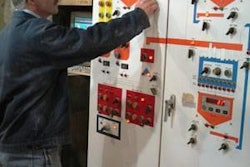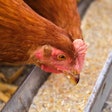"An Effective Biosecurity/HACCP Plan for Feed Mills" focused on how feed mill managers can preserve food safety by following proven biosecurity and Hazard Analysis Critical Control Point, HACCP, protocols at the latest U.S. Poultry & Egg Association Feed Mill Seminar.
The presentation included tips on getting started, seven principles of a HACCP plan, and a series of crucial gating factors, such as working safely with raw ingredients, managing a facility and its grounds, environmental concerns and contamination from employees. “Modern animal feed production is a process of constantly assessing the biosecurity risks associated every moment in the feed production cycle, and then taking action at critical control points to mitigate those risks before they become a problem,” said Richard Obermeyer, director of feed operations for Aviagen. “To produce feed that’s reliably safe, day in and day out, these practices need to be as much a part of feed mill operations as OSHA (Occupational Safety and Health Administration), FDA (Food and Drug Administration) and EPA (Environmental Protection Agency) and standard operating procedures.”

















